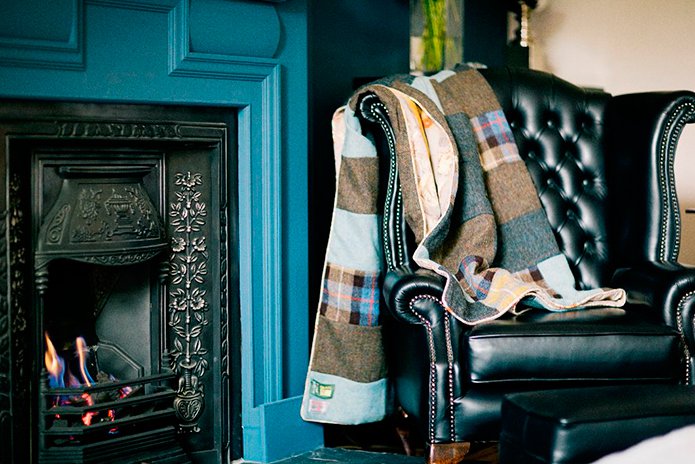
An authentic patchwork quilt is the quintessential heirloom. A passed‐down family fabric, draped over a bed or armchair, whether pristine or faded and a little ‘dog‐eared’, an original quilt is both a comfortingly familiar object and priceless in its connection with one’s past.
Not all of us are lucky enough to be in possession of such an iconic item, and whilst modern mass-produced quilts (in the loosest sense of the word – they are rarely multi‐layered or even patchwork!) are easily sourced, nothing comes close to a hand‐stitched mosaic of a myriad of fabrics. A real patchwork quilt is a tasteful tumult of tone and texture that stimulates the senses and at the same time soothes the soul, as it gently resonates with the heritage of the nimble fingers that created it.
Historically, the first evidence of quilting dates from the first century AD, where a quilted carpet was found in a Siberian cave, although earlier ancient Egyptian sculptures show figures which appear to be wearing quilted clothing, but we cannot be sure. It is thought European knights introduced quilts to Europe returning from the Middle East in the 12th Century, which they used as padding under, or instead of, maille or plate armour. Cotton and silk quilts became popular throughout the Renaissance with the aristocracy, although in our more recent history we associate quilts being made by the working classes as the truest form of recycling, when it was an absolute necessity to reuse and up‐cycle from a multitude of materials to hand, most often worn out fabrics, from dresses and uniforms to curtains and bedding, all artistically and aesthetically assembled and yet able to satisfy the most basic of human needs, those of warmth and comfort.
Since those times, quilt‐making has become somewhat of a long lost skill, and original heirlooms are few and far between, yet thankfully, there are a few true quilt‐makers remaining. One such individual is Lisa Watson, founder of Quilts By Lisa Watson, who, with her background in Fine Art Textiles, her reverence to Britain’s textile heritage and her passion for and commitment to quality, durability and authenticity cleverly recreates multi‐tonal, tactile, timeless pieces which are modern mixtures of both art and craft. Using British‐sourced materials, to honour the legacy of British textiles, Lisa captures the real essence of quilts, their practicality and decoration, form and function, in a contemporary manner. Here Lisa explains further the quintessential qualities of the quilt…
Firstly, for those readers that aren’t familiar with quilts, please can you describe what they are and how they differ to other forms of textile such as patchwork, blankets and duvets?
Essentially a quilt, just like today’s fashionable branded quilted jackets, is 3 layers stitched together. Quilts have been made from brown paper layers with a wadding sandwich in between and all stitched together. Not any of these quilts have survived physically though, just records of them in books! What have survived in Britain are the beautiful and cherished quilts handed down as family heirlooms. These historical quilts were stitched from fabulous fabrics found in dresses, bed hangings and even old uniforms that were becoming worn, which were then recycled and repurposed as quilts. Quilts can have intricate patchwork with appliqué and embroidery as their top layer, but to be a quilt there needs to be 3 layers that are tied or stitched together. There are lots of bed coverings available from coverlets to duvets to counterpanes to blankets, but they are all slightly different in their construction and content, so an English dictionary/Google search should clear up any queries!
I understand there’s a long tradition of quilts being handed down from one generation to another. Why is that?
If a quilt has been lovingly made by a family member from recycled and repurposed fabrics it is bound to have lots of resonance for each consecutive owner. There are family connections, stories linking the quilt to the fabrics and of course each owner collects more stories that then also become woven into the fabric of the quilt to pass on as a cherished heirloom. Aside from the comforting and familial qualities of quilts, what also appeals to me is that quilts can tell you lots about the socio-political times they were stitched in, perhaps particularly relevant before photography and mass media. There are quilts that have been stitched to commemorate significant dates and people. For instance the suffragettes’ stitched quilts/banners in quilting bees to promote their political campaign and HIV quilts in the 80’s and 90’s promoted understanding about and around Aids. Some pieced patchwork quilts even have newspaper templates still left in them which provide a tantalising glimpse into the life and times when a quilt was stitched. There was an impressive quilts exhibition at the V&A Museum entitled Quilts 1700-2010; Hidden Histories, Untold Stories which chronicled British quilts throughout these centuries and eloquently illustrated the exciting and diverse designs of quilts, plus their inherent historical significance.
The quilts that appealed to me in the exhibition included one stitched by the first ship full of female convicts that sailed to Australia; the prison reformer Elizabeth Fry gave the women the materials to stitch this quilt and the exhibition in 2010 was the first time this quilt had left Australia. There was a sweetly poignant quilt stitched by girl guides for their brown owl interned in a Japanese prisoner of war camp during WW2 that is made from hexagon patches stitched from the girls’ faded and worn summer dresses. I was also interested to find out about the work of Fine Cell Work who work with (mostly) male prisoners to complete stitched projects. There was something for everyone in this exhibition from the functional to the decorative to fine art textiles. Tracey Emin, Grayson Perry and lots of contemporary artists had their work on display in the exhibition too. It’s all a matter of definition, perception and display whether a quilt is art or craft!
What are the tactile qualities of quilts?
A quilt will warm your body and comfort your soul. I make my quilts because I love colour, textures and fabric. I wish to stitch useful and beautiful products that people will enjoy and take solace from and that are made to last. Quilts can appeal to the senses of touch, sight and even smell (in a good way)! From birth to death we are surrounded in fabric. Newborn babies are swaddled in blankets and all ages enjoy cuddling up in soft tactile coverings, whatever the weather. When we die we are wrapped in cloth. The fabrics stitched into quilts along with the quilting stitches binding a quilt together lend themselves to touch. Of course some quilts are more sensuous and tactile than other; I really like the feel of Harris Tweed contrasted with British velvet, other don’t, so it is all a matter of personal taste and individual touch!
Are they purely for function and domestic appreciation, or is there an artistic aspect to quilts as well?
Every year in August there is the Festival of Quilts at the National Exhibition Centre. It is a huge and amazing display of global quilting talent organised by The Quilter’s Guild. I have been a couple of times now and apart from being totally overwhelmed by the sheer vastness of the displays, the retail opportunities and the numbers attending, I have been thoroughly impressed by the quilts on display by grassroot makers and professionals alike. The first time I visited in 2013 I was drawn to an exhibition of quilts from India sewn by a women’s co-operative. Quilting traditions across the globe also tell cultural stories. In India quilts are still made from old saris, with rice sacks used as the middle ‘wadding’ layer then stitched intricately stitched with lots of repetitive decorative running stitch called kantha. This year, it was decorative appliquéd quilts stitched in Cairo by men that immediately caught my eye. Unless you have visited the Festival of Quilts you cannot imagine the diverse quilts on display and appreciate the intricate work stitched into every quilt. My recent blog post about this year’s Festival of Quilts provides some indication of the talent on display, but of course it is biased toward my quilt interests and aesthetics!
You have described your quilts as being ‘traditional with a contemporary twist’. Can you explain what you mean by this?
Since starting my quilt business a few years ago I have used the tagline ‘100% British made heirloom quilts and with a contemporary twist’. Apart from being (I think!) quite catchy it does describe the quilts I make since I use my knowledge of traditional British quilt design when making my own quilts, and I use fabrics which nowadays are perceived as non‐traditional fabrics in the quilts I stitch. For instance Harris Tweed is not readily used for quilts, (although there are plenty of Harris Tweed quilts out there if you look), so I have used contemporary new Harris Tweed in a strip design in my Harris Tweed collection of quilts. The strip design is a functional traditional utilitarian quilt design that was used to stitch quilts particularly in the North East of England. I also use quintessentially British printed fabrics on the flip side of my Harris Tweed quilts that surrounds furnishing weight British velvet, in a style that I have developed. Quilts are, and have been, stitched from lots of fabulous fabrics. Cotton printed fabrics, calico, first became popular for patchwork and quilting when it began to be imported from India way back in the 16th century. Due to the ease of working with cotton fabrics and the proliferation of American‐style patchwork and quilting techniques, cotton became the most commonly used fabric in quilting, so that nowadays cotton is king in the quilting world!
Where do you find inspiration for your quilt designs – are you drawing upon personal memories, historic designs…?
Everywhere! My degree in Fine Art Textiles (Embroidery!) means I draw and paint for inspiration, as well as utilising my knowledge of both historical and contemporary art & design for quilt ideas. I have also always been interested in folk art traditions, which include patchwork and quilting. As mentioned, the Patchwork and Quilting exhibition at the V&A in 2010 really inspired me to research further into utilitarian, working class traditional patchwork and quilting. This led me to start my business and influenced the design and fabric of my quilts. As a start up, I attended the first Meet the Manufacturer event in 2014 and I met some fascinating people and found out about some brilliant British businesses. One of the presentations was by Simon Middleton from The Shackleton Clothing Company. Simon, with his background in marketing and branding, “talks the talk” and our subsequent dialogue led to a collaboration to create A Gentleman’s Explorer Quilt; The Shackleton, inspired by the great man.
The top of the quilt is Harris Tweed made from 100% wool. This is a hardwearing fabric woven in Harris on the Outer Hebrides in Scotland, so the flecks of colour and weaves of the tweed fit in perfectly with the rugged landscape of Antarctica where Ernest Shackleton and his men survived their epic adventure. The back of the Shackleton includes durable corduroy in just the right gents’ trousers shade encircled with utilitarian fabrics from Ian Mankin. The Shackleton is 100% British made with fabrics carefully chosen to reflect the age and times that Shackleton encountered and inspired.
Do you carry out bespoke projects as well, and if so, how does that work?
As my business (and my web presence) has become more established, I have had more enquiries to create Bespoke/Commissioned quilts. I really enjoy the challenge of one-off quilt commissions; it is great to be able to work with a client and their cherished fabric to create a unique personalised quilt. I have, for instance, stitched a wedding dress quilt, and I am currently working on a memory quilt for a student made from all her baby and childhood clothes, while a tie quilt is my next commission. As previously mentioned, you can make a quilt from any fabric you wish – and people have – although some fabrics are more difficult to sew than others. Wedding dress fabric being silky and slippery is quite a challenge to sew, but as I have sewn my own clothes since I was a teenager, I can stitch pretty much any fabric.
From where do you source your materials?
The materials used in my quilts are all sourced from British manufacturers, I use thread from a mill in Lancashire, my ribbon from Cheshire and I aim for my quilts to be 100% British made. We are a fantastic nation with a brilliant textile heritage which I wish to celebrate and make use of. I can resource beautifully made textiles on my doorstep, so I have no need or wish for alternatives. Nothing is either expensive or cheap; it’s either worth it or not. I am not sure where I picked up this quote from, but it resonates and it is my personal business mantra for my quilts. Individuals make personal choices to buy British; to buy quality goods made to last; to understand that for unique bespoke designs they need to pay a little bit more. I recognize not everyone would choose to purchase my quilts. However, I do know from the responses of individuals (and now companies) that have purchased or promoted my quilts that they appreciate them wholly and these customers and fans feel my quilts are worth it. A quilt will warm your body and comfort your soul.
How do you care for quilts?
It depends how old your quilt is and what materials it is made from. A quilt will wear with age and use and like a painting its colours can fade and fabrics can weaken (especially natural silks!) if kept in direct sunlight. Personally, I think reasonable wear and tear on a quilt just adds to its charm, although it’s up to the individual to decide what reasonable wear and tear is. I enjoy the chat with visitors at fairs where I have a stand. Recently a man told me how he had lovingly restored a Victorian crazy patchwork stitched with sumptuous velvets and silks which had been rescued from a painter who was cleaning his brushes with it. This is not in my opinion reasonable wear and tear! My quilts are made from hard wearing Harris Tweed and British furnishing weight cotton fabrics. As such my quilts are robust and will wear well and even look better with age. Animal hairs can be removed by brushing (or hoovering). Small stains can be removed with a damp cloth. I suggest airing my quilts periodically to refresh them. For a thorough clean, I recommend Dry Clean Only, (although I have put cotton quilts in the washing machine on a hand wash cycle).
For many people quilting is a pleasurable hobby. Why and how have you turned this into a business?
Just like any creative industry from fine art to interior design through to fashion, stitching quilts can equally be either a pleasurable hobby or a full time profession. Back in the day I completed an embroidery degree at the then Manchester Polytechnic. As part of my course I made several quilts which were all about trying out different hand and machine stitching techniques, making use of my collection of dyed recycled fabrics and using at the time the then cutting edge technology of computerised embroidery (I did graduate in 1992!) In my 20s I did have a conscious thought about wishing to make and sell quilts for a living, but there were lots of other things I wished to do and the time wasn’t right. Roll forward 20 years, we now have e-commerce and Twitter etc. at our fingertips, so I decided now was the right time for me to make and sell quilts for a living.
Starting your own business is incredibly exhilarating. My business idea was to combine my passions for design, colour, British quilt designs and British fabrics to create a product about quality and authenticity; British made heritage quilts with a contemporary twist. I live in Manchester and the North West has an amazing and inspirational textile heritage. I feel that Greater Manchester particularly is currently experiencing a real bubble of business opportunity and I feel so enthused to be part of a renaissance in British textile manufacturing. I make my quilts because I love colour, textures and fabric. I wish to stitch useful and beautiful products that people will enjoy and take solace from and that are made to last.
By way of insight into what craftsmanship that goes into making your quilts, can you briefly explain the process of making one?
Making a quilt takes time and care for every stage from the first measured cut of the cloth through to final finish by hand stitching on my label. There is a meditative process to making a quilt and a rhythm to stitching them. My quilts are not mass produced and even when I am not stitching a quilt personally I know due diligence has gone into the making of every quilt. I estimate it takes at least 10 hours to make one of my Harris Tweed strip quilts. I have registered my Harris Tweed strip quilt design with @cid (Anti Copying in Design) as although there are lots of similar strip quilts, none include the exact same methodology in making, have a piped edge or bordered flip side construction as mine do.
Is there such a thing as a typical customer of your quilts?
Finding my niche for my quilts has been an adventure. I know what and why I wish to stitch and create, and the people who buy my quilts seem to appreciate my aesthetic. Happily my business is growing and so are my customers.
My quilts are an investment, so people who have brought my quilts understand that quality materials are stitched into every quilt along with care and time taken to sew them. My customers appreciate that as my quilts are stitched in limited numbers and with the strip patchwork design; each one is truly unique. I was recently passed an article on why we’re turning our hands to quilts again and it concluded that “unlike the patchwork upholstery and over-sized quilted shapes seen in furniture design in recent years, the humble hand-stitched quilt is back in favour precisely because it is not vogueish – it is the timelessness that appeals” (The Telegraph). It seems to me that a lot of people have over-killed on fast fashion and mass consumerism and are back to making personal choices on aesthetic investments in quality unique items that are made well and to last.
Finally, what future plans do you have for your business?
Keep stitching quilts and expand my business. My new Tumbling Block blankets inspired by a traditional quilting block pattern have just been knitted and are ready for the wintry weather. I am currently working on quilted quilts stitched with shirting fabric for next summer. When I started my business one of my goals was to grow big enough to be able to employ, (rather than just sub-contract) people in the North West and train people via apprenticeships in the North West. This is still my intention.
Many thanks to Lisa for taking time out of her busy schedule to answer our questions. All images © Quilts By Lisa Watson.

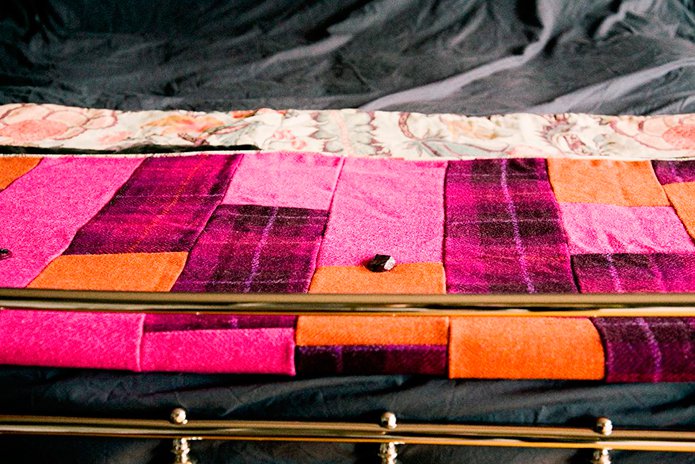
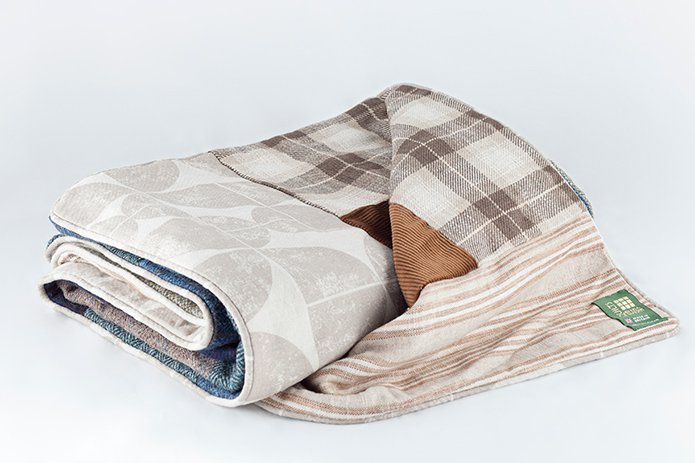
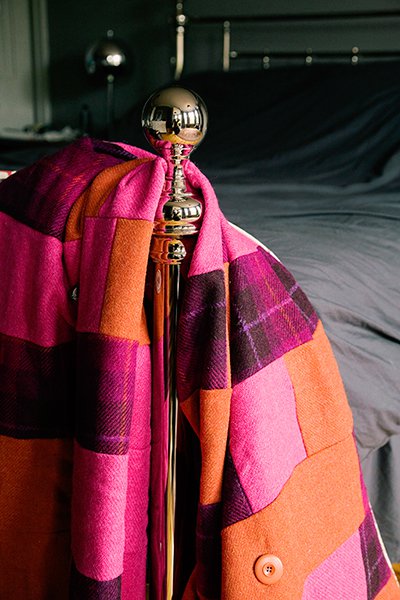
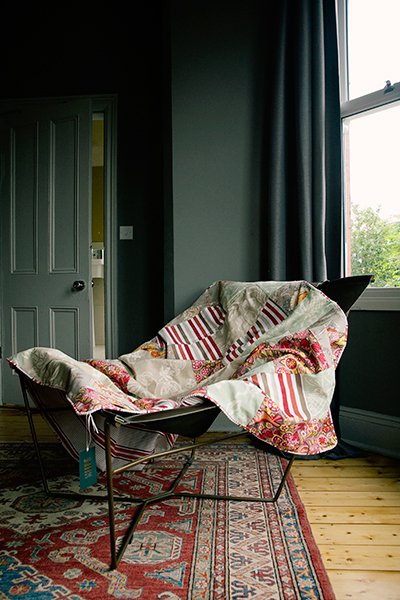
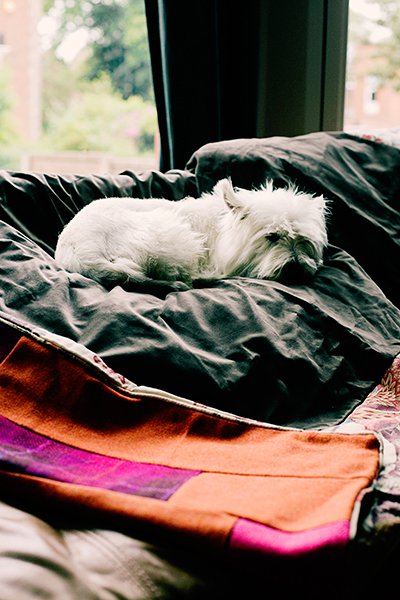
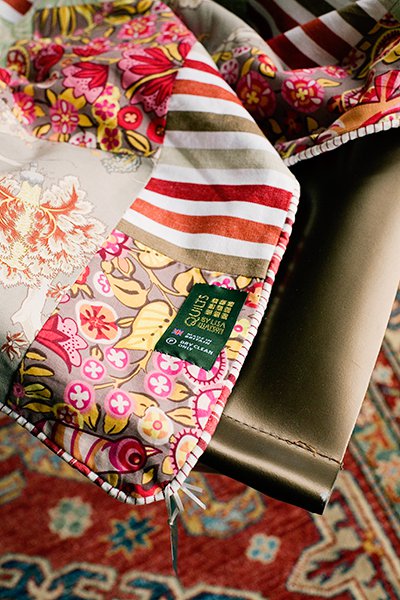
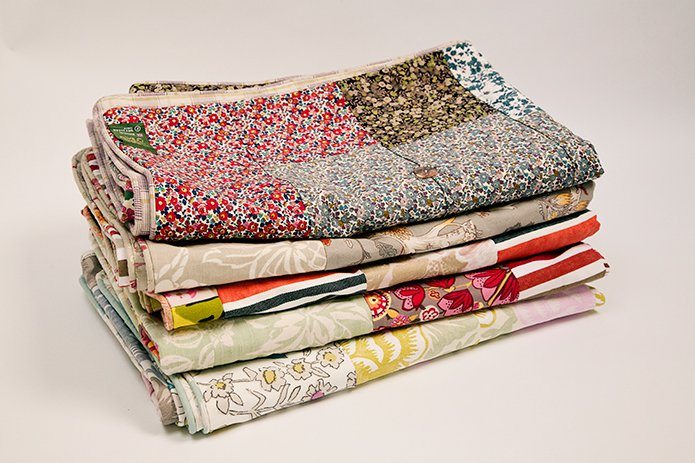
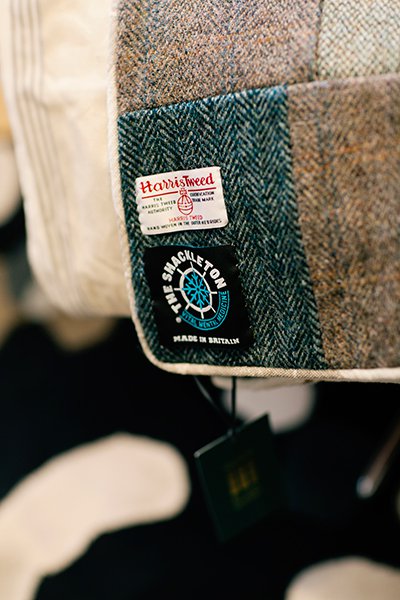
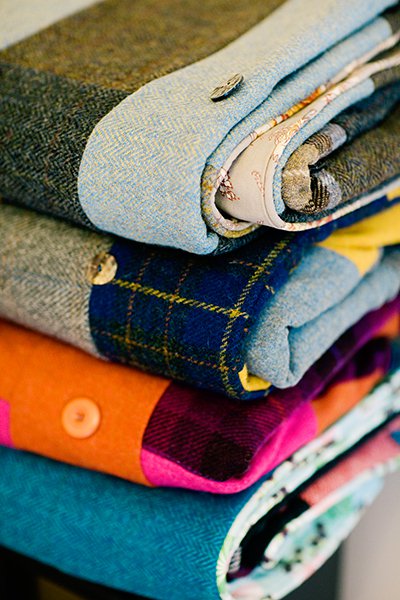
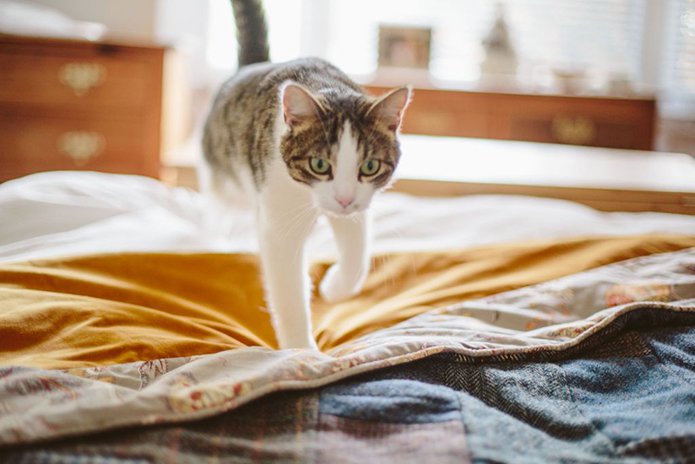
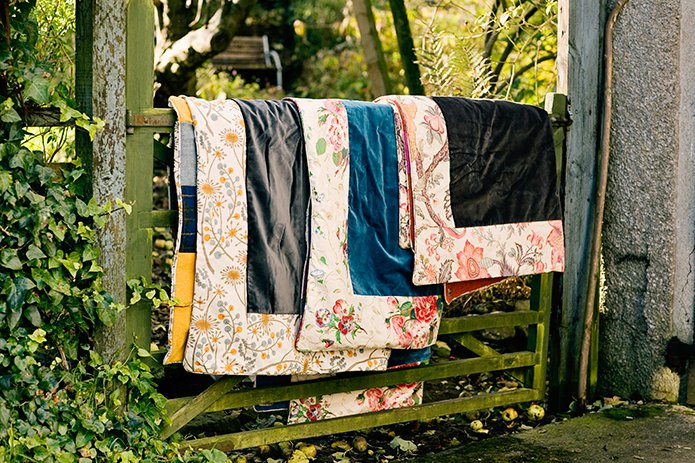
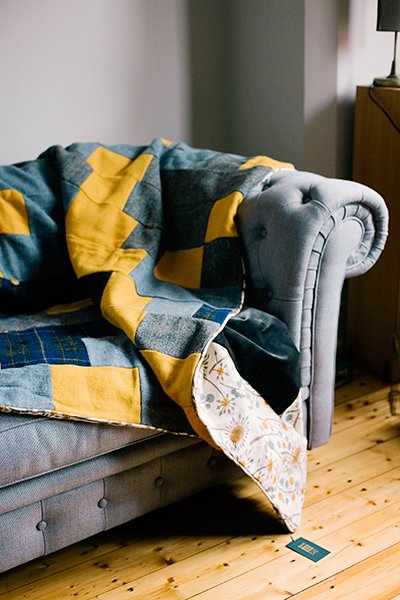
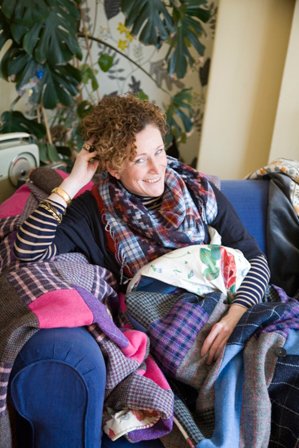
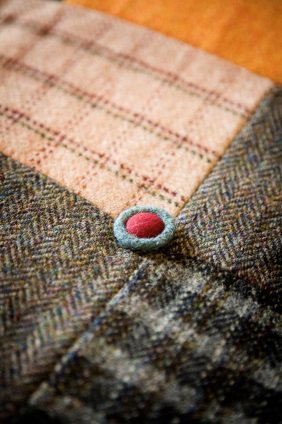
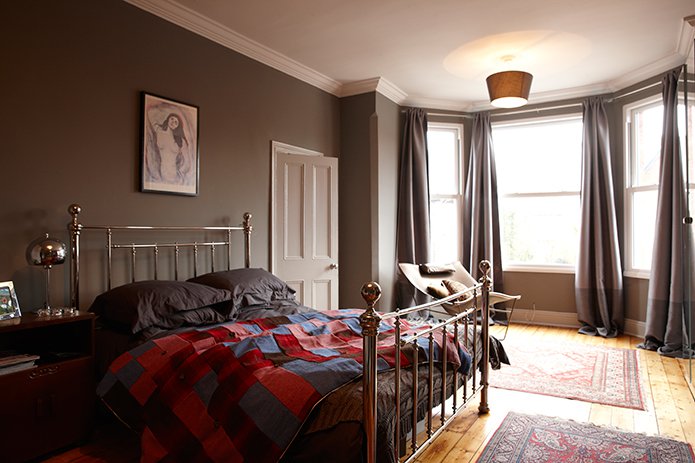
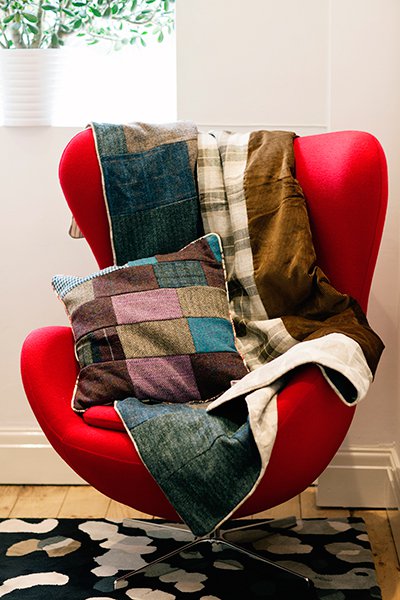









Monday, April 24th 2017 at 1:53 pm
[…] a moment amongst all the festive hiatous, approved I recommend reading this excellent article by Merchant&Makers on Quilts & Quilts by Lisa Watson […]
Monday, February 29th 2016 at 4:17 pm
[…] If you wish to have a moment, I thoroughly recommend reading this excellent article by Merchant&Makers on Quilts & Quilts by Lisa Watson […]
Tuesday, December 22nd 2015 at 9:49 am
[…] to take a moment amongst all the festive hiatous, I recommend reading this excellent article by Merchant&Makers on Quilts & Quilts by Lisa Watson […]